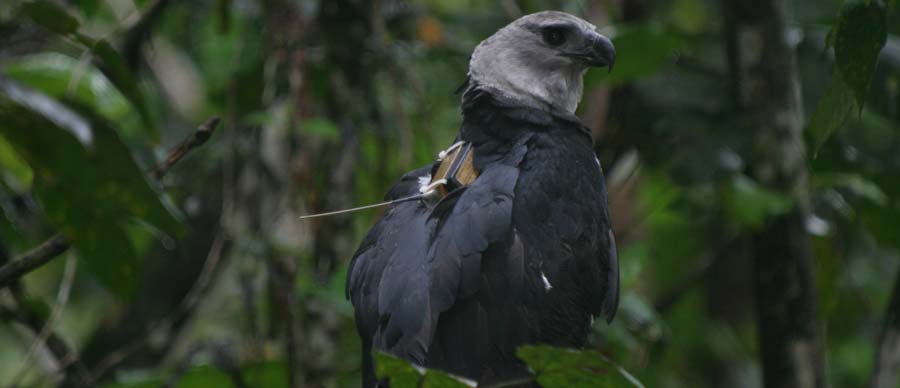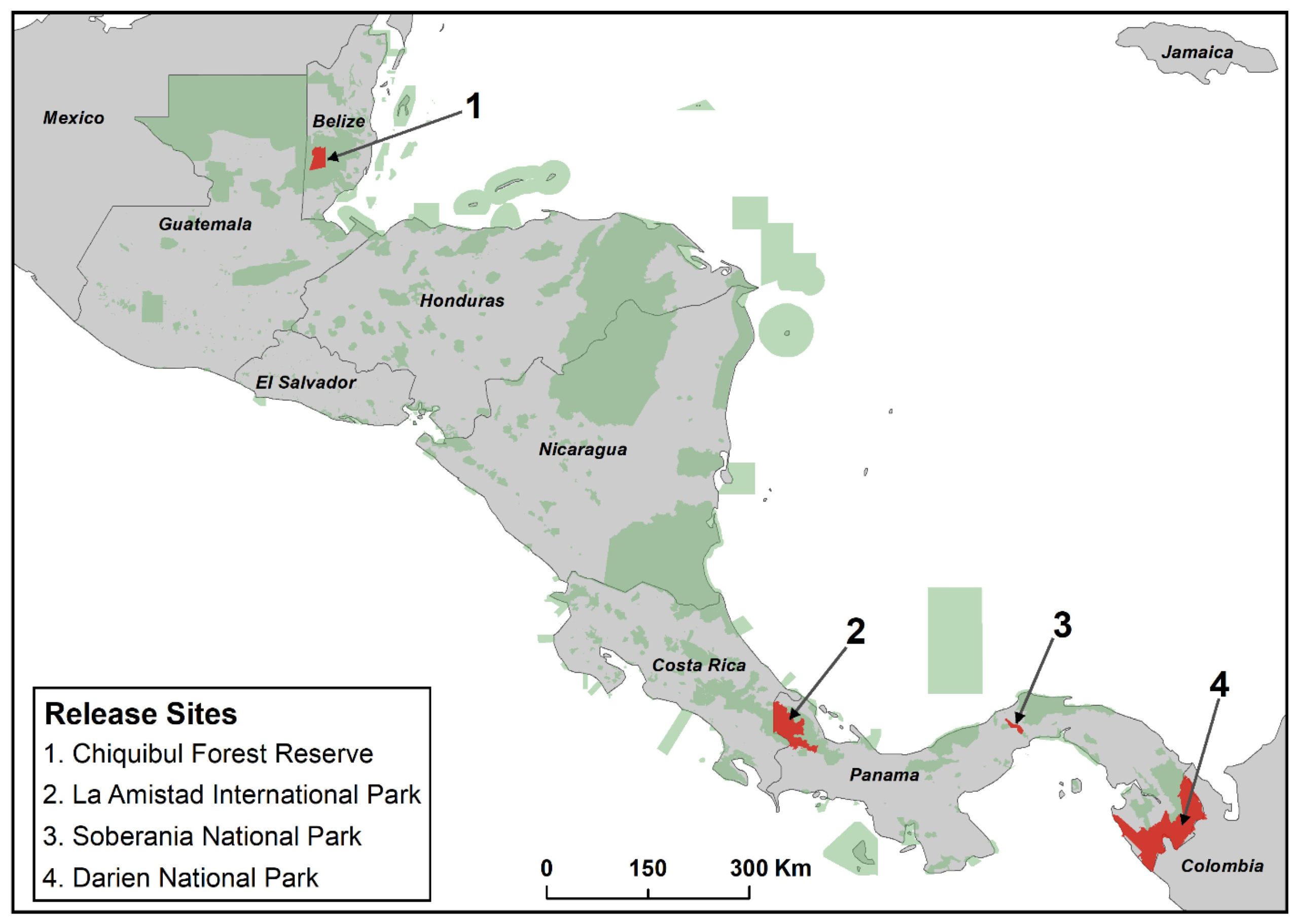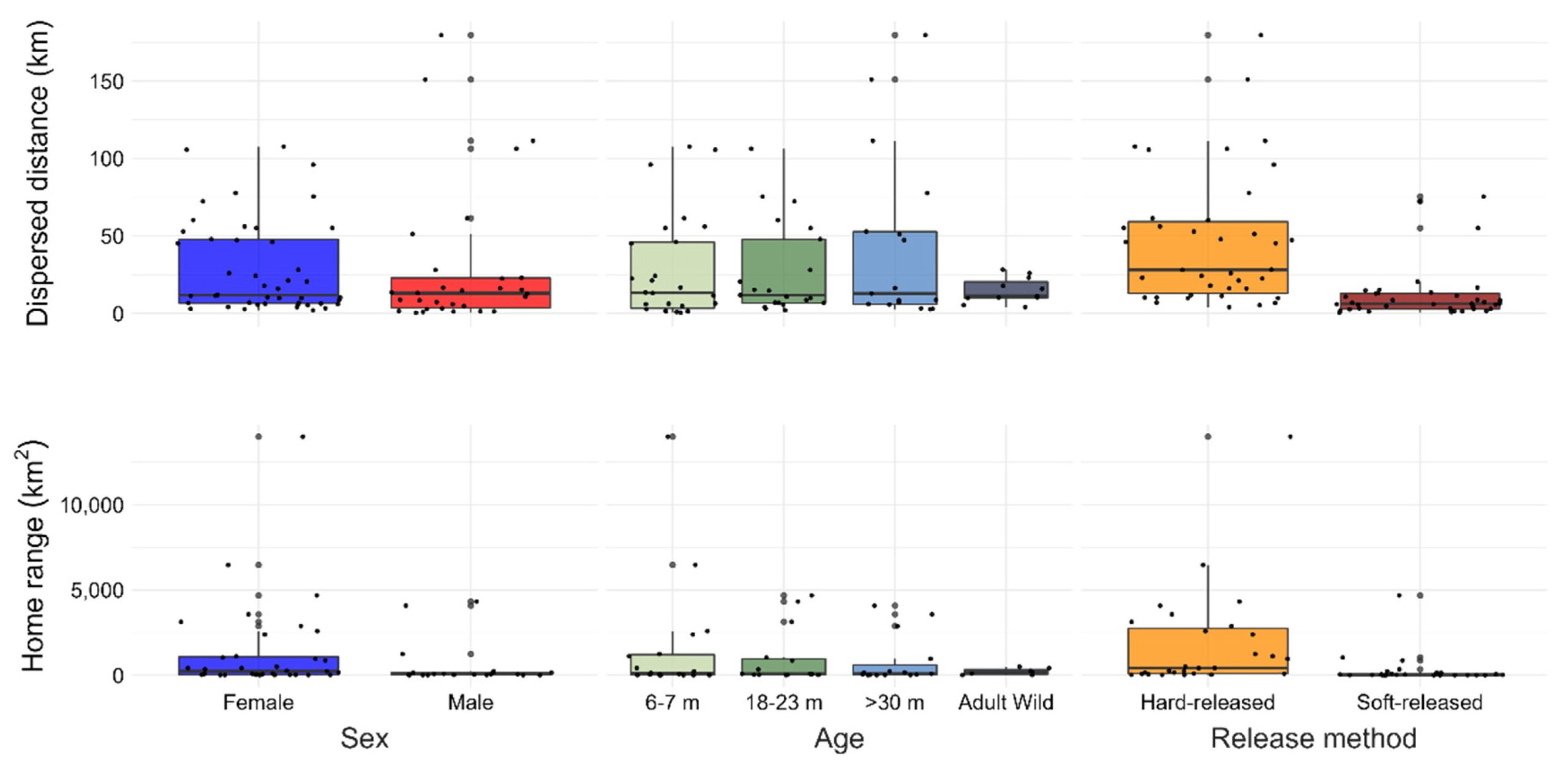← Back
Selecting sites for Harpy Eagles’ releases

Harpy Eagles are threatened birds of prey of Central and South Americas. A study show why and how releases of rehabilitated or captive-born animals should consider home range characteristics and habitat preferences.
The Harpy Eagle (Harpia harpyja), found in tropical lowland evergreen forest from south Mexico to northeast Argentina, is the largest forest raptor living in Central and South America. It preys on tree-dwelling medium-sized mammals such as sloths and monkeys. Much like the Philippine Eagle (see Philippine eagles forage in human fragmented forests), it is threatened by habitat loss and human persecution. It is globally listed as Vulnerable and Endangered or locally extinct in some countries of Central America.
Birds of prey have a key role in ecosystems and are often considered umbrella species.
Between 1987 and 2006, The Peregrine Fund’s released 49 captive-born and rehabilitated Harpy Eagles in Central America, as part of an effort to restore the species’ population in the region. 36 Harpy Eagles (31 captive-reared and 5 rehabilitated eagles) were tracked with Argos-GPS satellite telemetry.
More info about animal tracking with Argos
They were released in Belize and Panama and their post-release dispersal and annual home range size were estimated. They were tracked for an average of 551 days (4 years for the longest). With the multi-year tracking, 55 individual eagle annual core areas and home ranges could be estimated from the Argos-GPS locations.

Location of release sites of Harpy Eagles in Central America. Protected areas are indicated in green. Protected areas where eagles were released are highlighted in red. (from [Naveda-Rodríguez et al., 2022])

Dispersal and home ranges by sex, age at release, and release method of captive-reared and rehabilitated Harpy Eagles in Central America. (from [Naveda-Rodríguez et al., 2022])
Analysis of the home ranges and core areas showed high variability among individuals in relation to sex, age at release, and release method. Older eagles dispersed further and had greater home ranges. Females had larger average home ranges than males. Although 80% of the individuals had more than 40% of their annual home ranges within 200 protected areas, their average home range was larger than most protected areas in Central America.
Harpy Eagles had larger home ranges when the landscape was heterogenous. Thus, they could be moving less broadly in areas where resources are aggregated.
The small size of many protected areas in Central America may not be highly effective for the reintroduction of Harpy Eagles. In particular, coordination between countries is required because Harpy Eagles’ home ranges can span multiple countries. Moreover, connecting the protected areas in networks or biological corridors could also help their conservation. Future releases of rehabilitated or captive-born Harpy Eagles should consider home range characteristics and habitat preferences.
Reference & link
- Naveda-Rodríguez, A.; Campbell-Thompson, E.;Watson, R.T.; McCabe, J.; Vargas, F.H. Dispersal and Space Use of Captive-Reared and Wild-Rehabilitated Harpy Eagles Released in Central American Landscapes: Implications for Reintroduction and Reinforcement Management. Diversity 2022, 14, 886. https://doi.org/10.3390/d14100886
- https://www.peregrinefund.org/projects/harpy-eagle
Main photo: Rehabilitated adult Harpy Eagle with an Argos satellite transmitter after release at Soberania National Park in Panama @Angel Muela.

